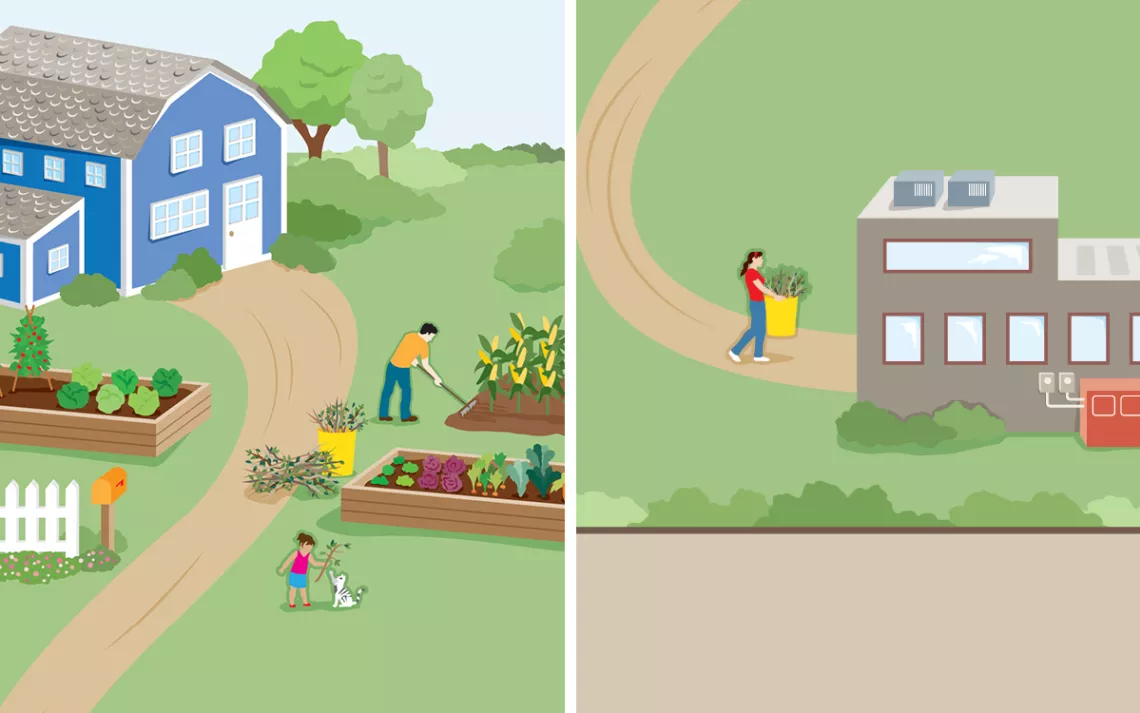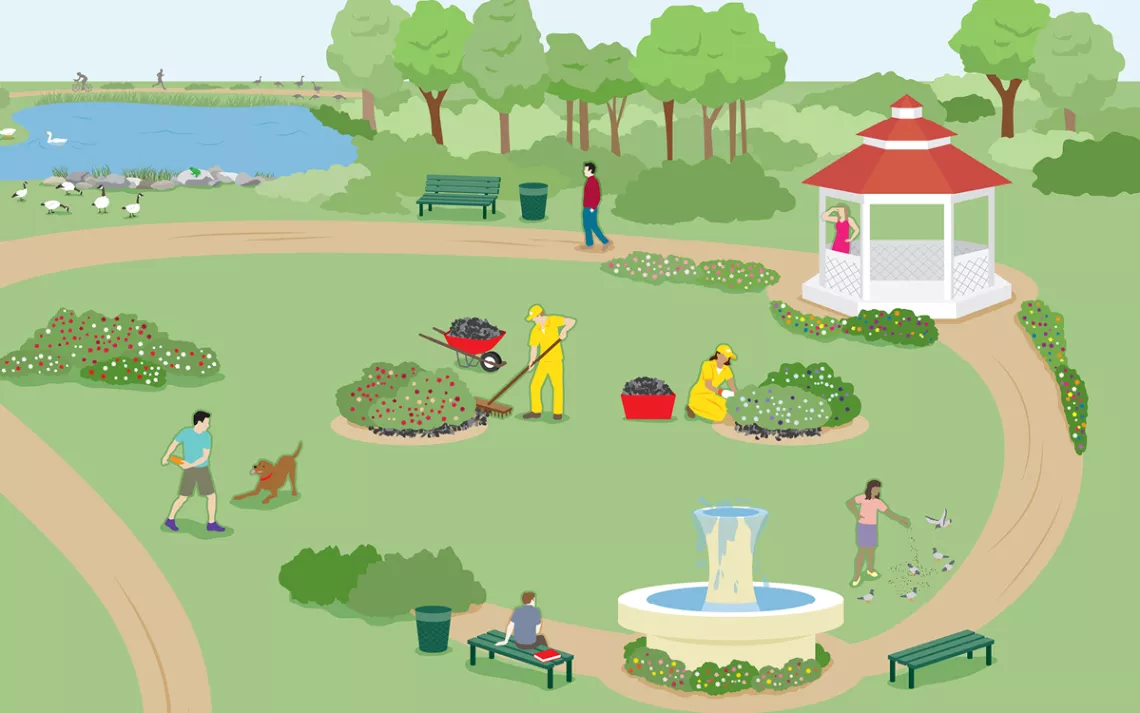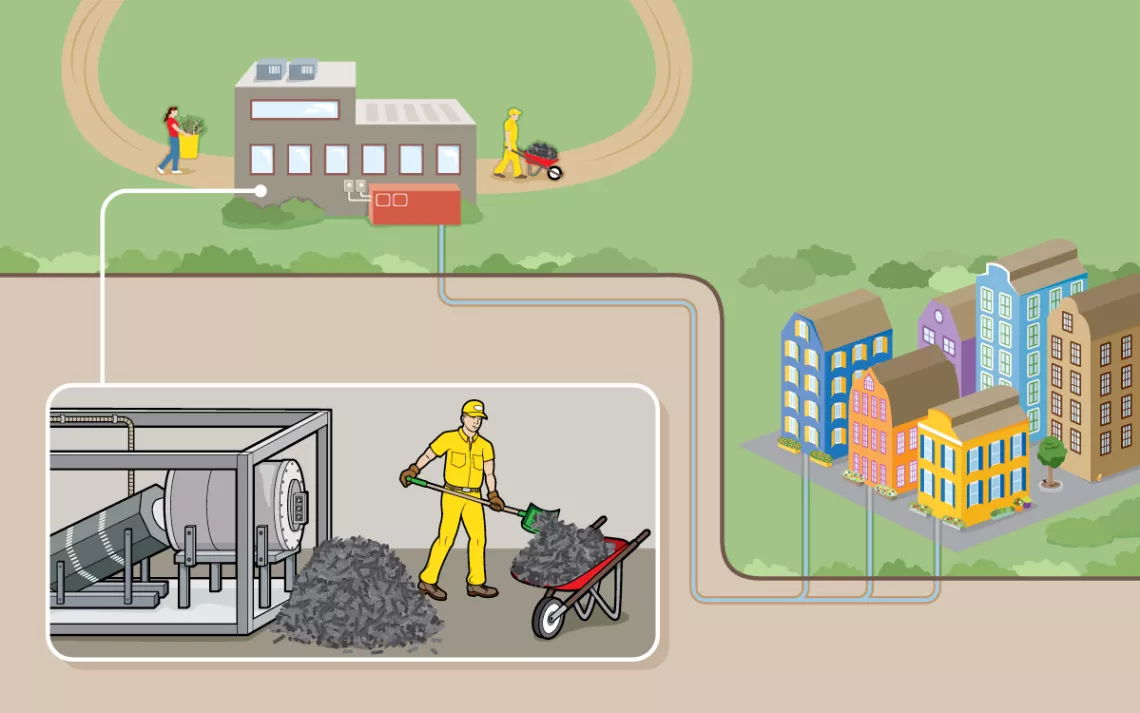Stockholm Explores Biochar Solution to Carbon Reductions
Leaves and lawn trimmings are key to a process for generating thermal energy
Combining wood and leaves with blazing-hot temperatures can mean bad news for the climate. When those materials burn, the carbon stored inside them is turned into carbon dioxide, which is released into the atmosphere. But the city of Stockholm, Sweden, is experimenting with a system that heats garden waste to produce modest amounts of power while actually locking away carbon. This "carbon negative" process relies on the production of biochar, a type of charcoal that can be added to soils to help gardens grow.
Infographic by Brown Bird Design
 The Magazine of The Sierra Club
The Magazine of The Sierra Club






